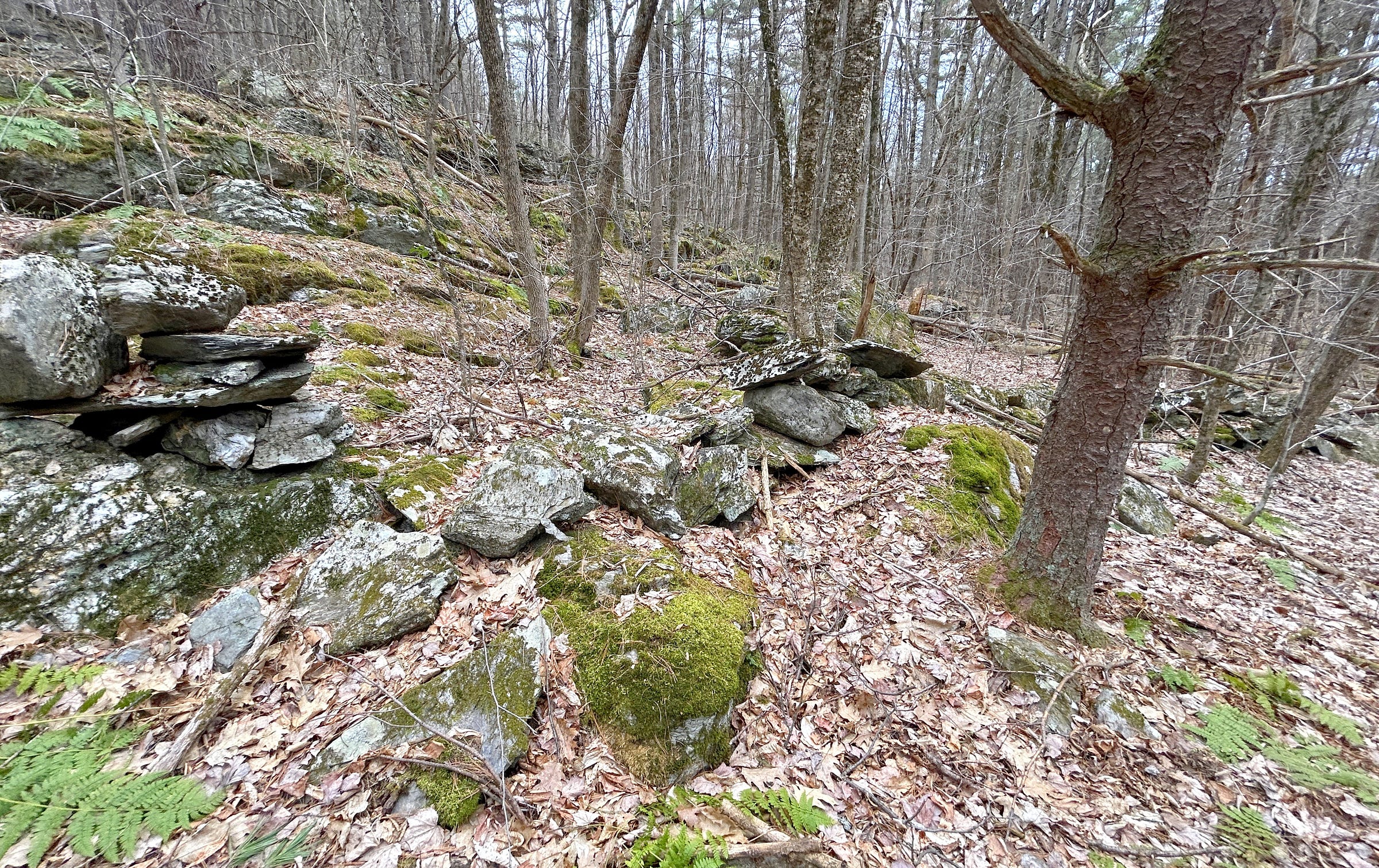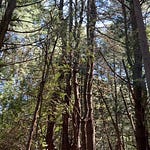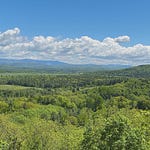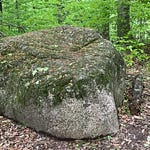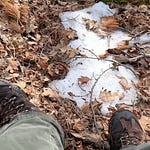This curious-looking stone row runs along the base of a ridge littered with intriguingly shaped boulders and stones. Although it eventually links up with what's often considered somewhat more "traditional" stonework, this stretch here drew my attention.

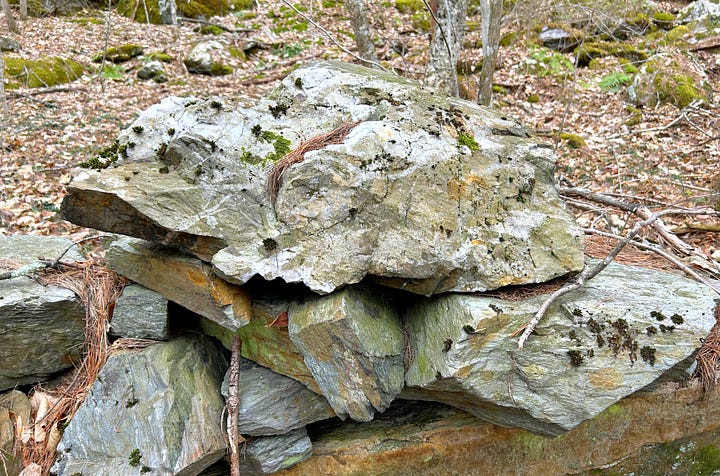
As seen from the other side…
This is in a public space where the town attributes all of the stonework to 18th and 19th century agricultural usage of the land, mostly sheep farming during the 19th century Merino Sheep “Craze”. But — to my eyes — this is a blended landscape, with a thin veneer of European-influenced stonework sitting atop ages of older Indigenous stonework.
In a stretch such as this, where there’s no obvious utilitarian reason to “repair” an old “wall”, we may see the older Indigenous stonework relatively un-altered. Though, it seems to me, there’s also a relatively good chance any flashy pieces atop the stone row have been snagged and carted off by treasure hunters over the centuries.

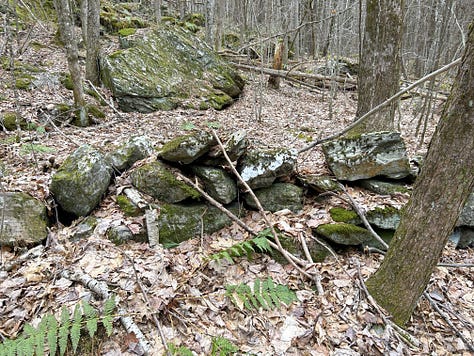
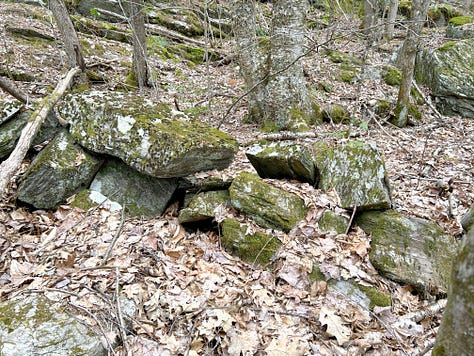
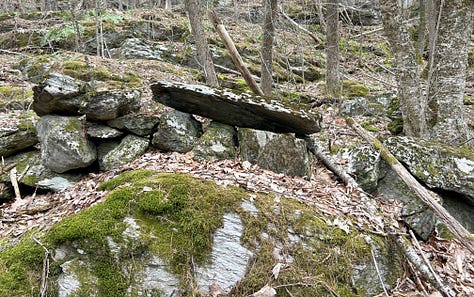

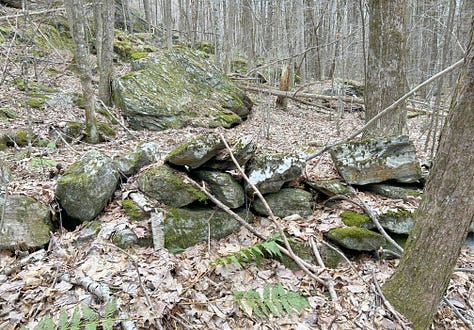

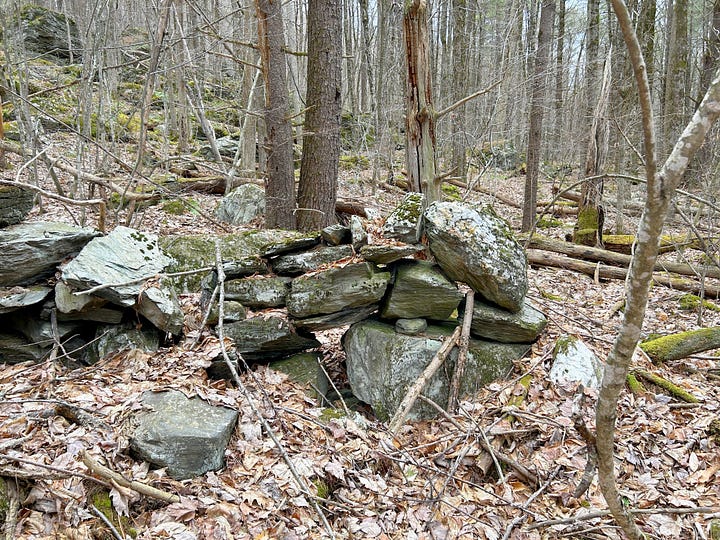
Of note? This stonework sits in an area known to be an Indigenous Travel Corridor dating back to the Ice Age. It’s also an area with an Indigenous-related place name.
Here’s a video look at some of the boulders and some of the stone row seen in the gallery photos above. All the video included in my pieces is shot by me, in case you wondered.
There would seem to be a good case to be made that this is potentially older, Indigenous stonework, although the town is fond of quoting UVM (University of Vermont) Archaeologists who, in the past, have said no evidence has yet been found here of Indigenous habitation.
Spent five hours yesterday out wandering these woods, and have much more to share to come. If you’re enjoying this and haven’t yet signed up, please consider subscribing to support my research and writing. Thank you for reading this newsletter!



